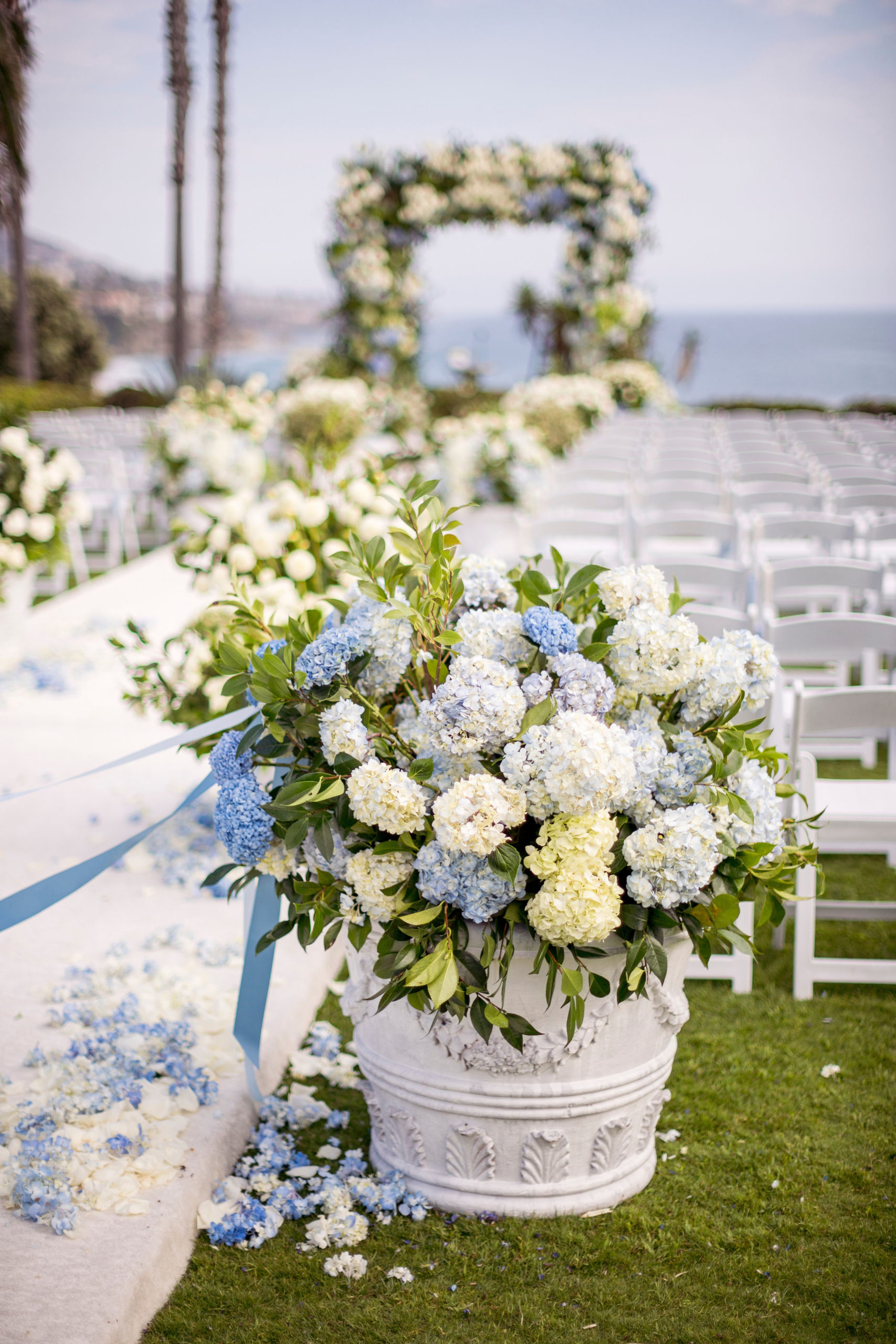
There’s just an extra special something about an outdoor wedding, isn’t there? Whether it’s a garden ceremony, an alfresco cocktail hour, dinner and dancing under the stars, or a whole event outdoors, that fresh air feeling is hard to beat! (Especially when you’re blessed with perfect blue skies!) However, planning an outdoor wedding definitely comes with its own set of challenges. There are always lots of moving parts to ensure your guests’ comfort, whatever the setting, as well as weather to take into account. Some will depend on the setting, but others are common to all outdoor weddings, from beach to backyard. Here are my dos and don’ts for planning an outdoor wedding that goes off without a hitch!
DO consider your location carefully. When planning an outdoor wedding, it’s important to think beyond the breathtaking backdrop. Depending on your locale (i.e. beach, mountain, garden, etc.) there are specific elements you’ll need to take into account. For example, at a beach wedding, a sea breeze can dislodge décor or make vows hard to hear or mess with your hair. The time of day you’ll be outdoors can also make a big impact. It’s always a good idea to talk to your wedding planner and venue to find out about any potential issues so you can cover them ahead of time.
DON’T assume you’ll save money. Some couples believe that if they get married in an outdoor space they’ll be able to make significant savings to their budget. However, this is rarely true. Even public outdoor areas such as parks, campsites, and beaches often have a site fee. You’ll also need to pay for rentals, including portable restrooms, a dance floor, and a tent. Sometimes subflooring, generators, and more. Be sure to build in costs for transporting flowers and décor as well.
DO prioritize guests’ comfort. No matter how stunning an outdoor location is, it won’t matter if your guests are too hot, too cold, or surrounded by bugs. For a summer wedding, be sure to provide plenty of shade and hydration as well as places to sit. For a fall or winter outdoor wedding, be sure to provide blankets or wraps. If bugs are an issue, provide spray and place citronella candles around your space. Lavender and peppermint in the florals can also be an effective deterrent to mosquitos.
DON’T wear heels. Whether you’re a bride or a guest, you’ll definitely want to skip the high heels if a significant portion of the wedding day will be outdoors, particularly if it’s going to be on grass. The last thing you want is your gorgeous shoes sinking into the ground (or worse, making you stumble as you walk down the aisle!). Flats or wedges are the way to go. It may also be a good idea to provide guests with heel stoppers in case they have footwear challenges.
DO have an effective Plan B in place for bad weather. Even if your wedding is taking place in the sunniest season, you should always have a backup plan in place. In fact, that’s true for planning an outdoor wedding, no matter the season or location. Talk to your venue about alternative indoor locations for ceremony and other elements, and work through how these may work with your flowers and other décor. You should also consider hiring umbrellas and even a tent, just in case.
DON’T choose buttercream. If you’re getting married outdoors in a warmer climate, buttercream frosting is not a great idea for your cake as it can get gooey. Instead, choose a fondant and have it brought out just before the cake cutting.
Taking these precautions will help to ensure smooth sailing on the day of the wedding.
xoxo,
Mindy
Image by John and Joseph Photography Inc.



